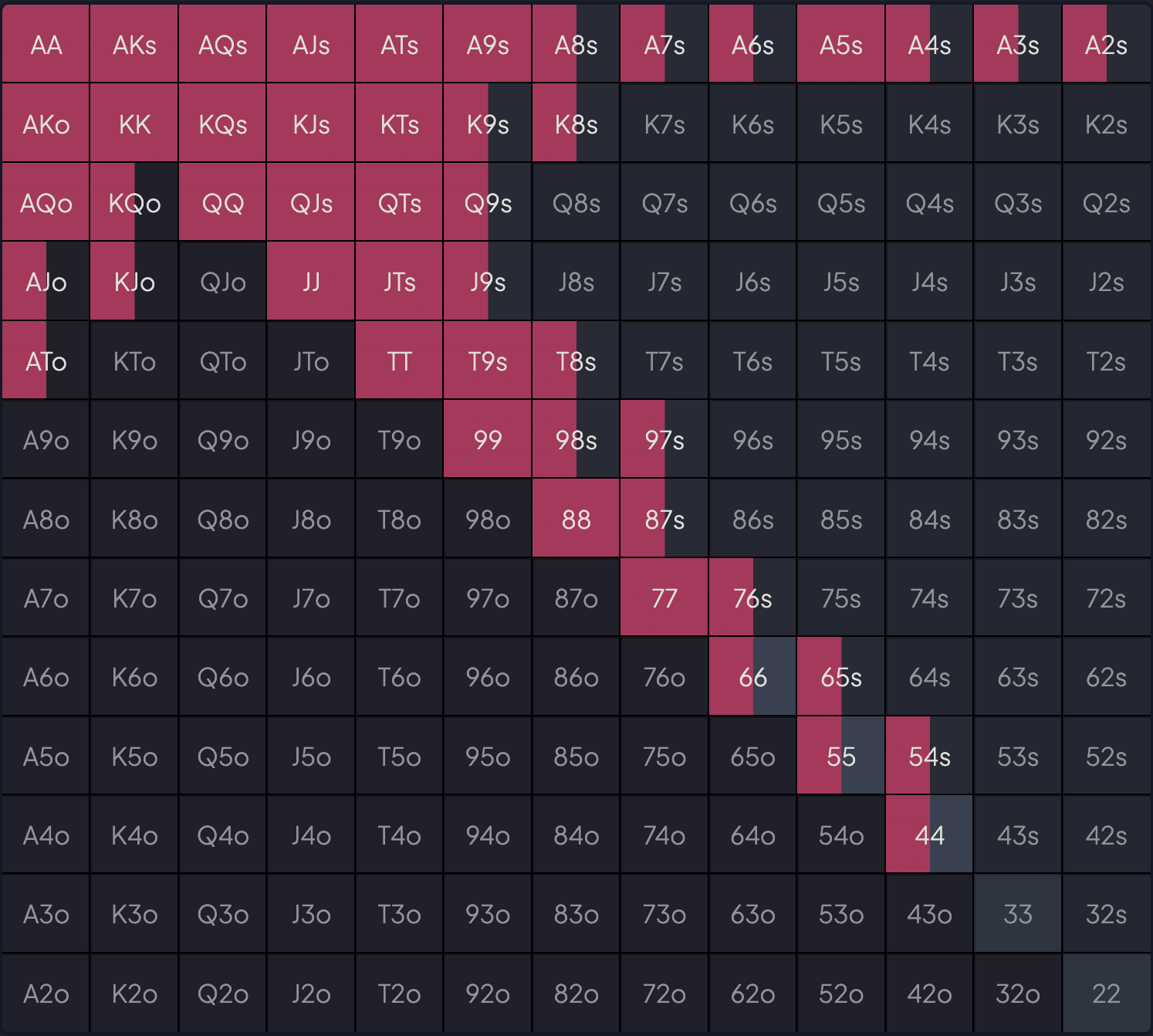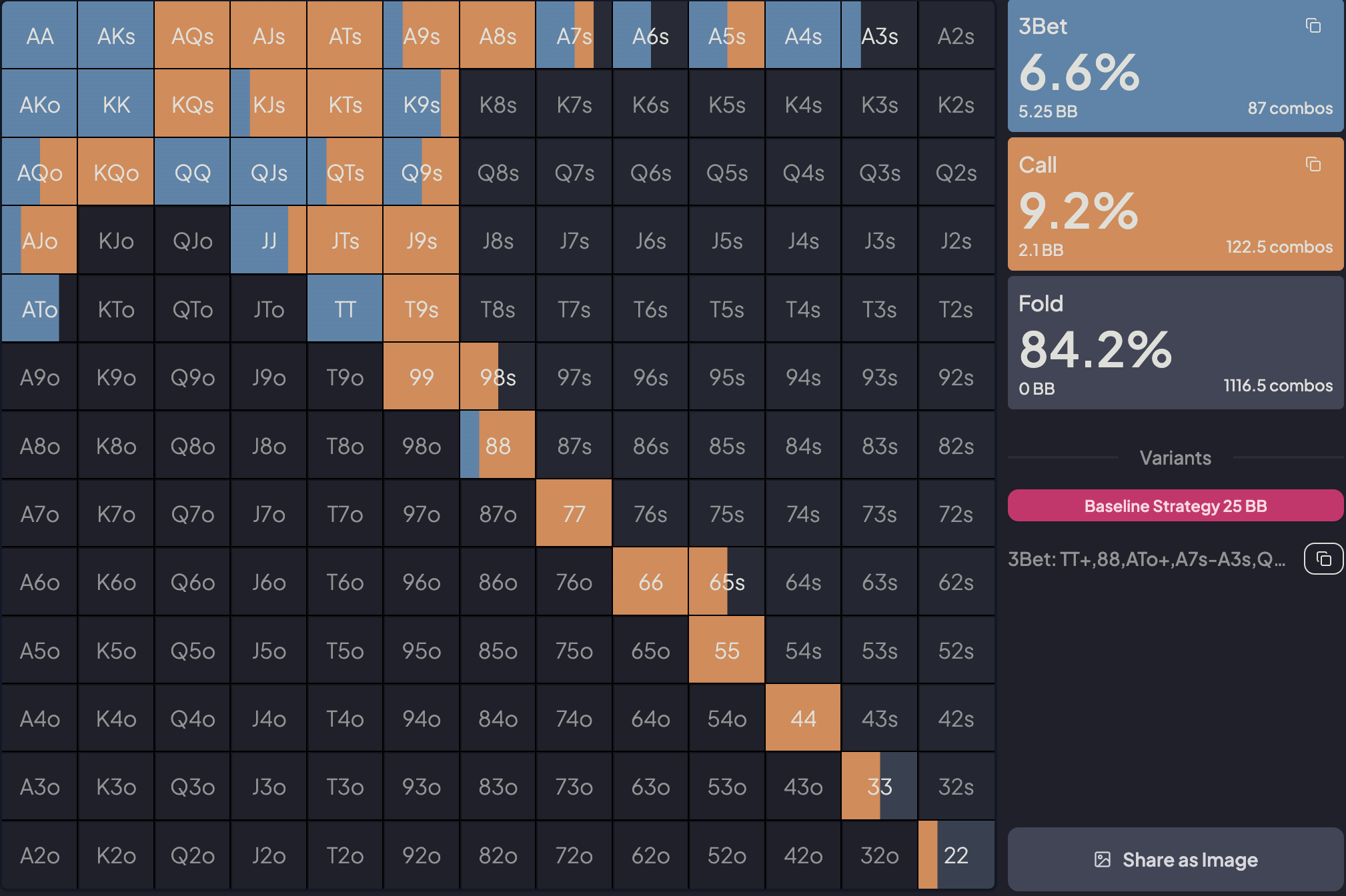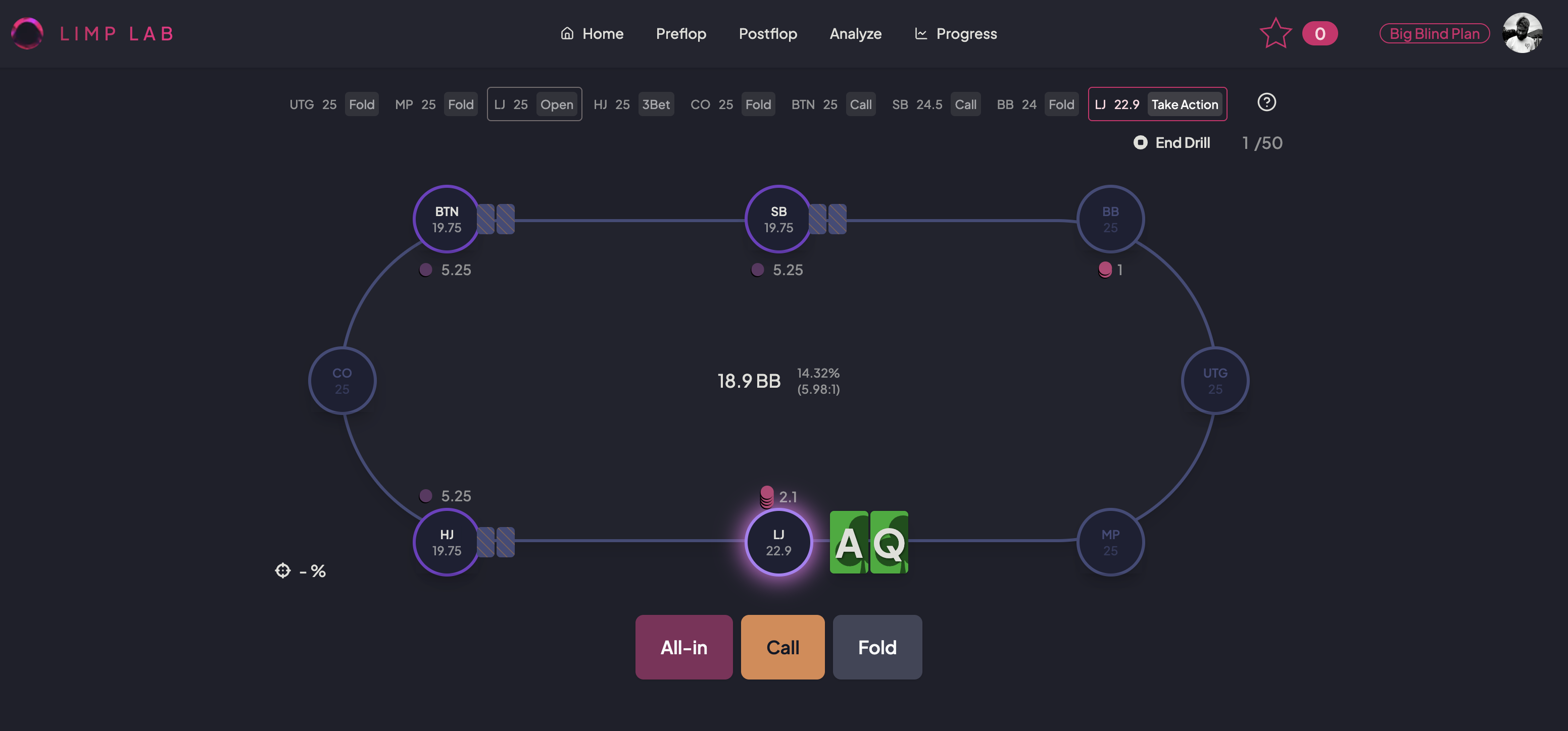Introduction to Range Morphology
Understanding the shapes and forms of poker ranges transforms guesswork into systematic strategy. Range morphology provides the essential framework for making optimal preflop decisions and setting up profitable postflop play. Rather than memorizing thousands of specific hand combinations, learning to think in terms of range shapes makes preflop theory both manageable and powerful.
By mastering range morphology, you’ll develop the conceptual framework necessary to adapt your strategy across different game conditions, opponent types, and strategic situations.
The four fundamental range types
Modern poker theory identifies four distinct range structures, each with unique strategic properties and applications. Understanding these shapes transforms how you think about preflop strategy by providing clear mental models for different strategic situations.
Linear ranges: The foundation of strong play

Linear ranges contain hands in continuous, top-down order starting with the strongest possible holdings. These ranges are “uncapped,” meaning they include the nuts and create immediate range advantage over opponents. Early position opening ranges exemplify linear construction. For example, a UTG player opening 17.6% of hands includes precisely the most valuable 17.6% of starting combinations.
The strategic power of linear ranges lies in their equity distribution and board coverage. When holding a linear range, you possess all the strongest hands during preflop, while maintaining reasonable connectivity across different board textures. This creates both immediate betting incentives and long-term positional advantages.
Against linear ranges, proceed with caution. These ranges contain premium holdings that dominate most calling ranges, making aggressive action often unprofitable. The opponent’s uncapped nature means they can credibly represent strength across most board textures, forcing careful defensive play.
Polarized ranges: Betting for value and bluffs
Polarized ranges combine very strong hands with weak bluffs while excluding medium-strength holdings. This structure appears most commonly in river betting situations where you’re either extracting value from premium holdings or bluffing with hands that cannot win at showdown. But it can also play a factor in 3-bet pots preflop (typically in heads-up or blind v blind spots).
A typical example occurs when the big blind 3-bets against small blind opens. The BB’s range includes premium pairs (AA-TT) for value plus weak hands like T2s and K5o as bluffs, while excluding medium holdings like 99–77 that prefer calling. This creates two distinct “buckets” separated by a clear gap.
Polarized ranges typically employ larger bet sizes to maximize value extraction and fold equity. The geometric relationship between strong hands and bluffs allows for sizing strategies that put maximum pressure on opponents while maintaining mathematical balance.
Counter-strategy against polarized ranges focuses on bluff-catching with medium-strength hands. Since polarized ranges lack medium holdings, your marginal hands often perform well against the opponent’s distribution of nuts and air.
Condensed ranges: Medium strength without extremes

Condensed ranges consist primarily of medium-strength hands while lacking both premium holdings and complete trash. These “capped” ranges appear frequently in calling situations where the strongest hands would prefer raising and the weakest hands would prefer folding.
Consider the button’s calling range against UTG open. This range includes hands like 99–77, suited aces, and broadway combinations—holdings too strong to fold but not strong enough to 3-bet. The resulting distribution creates density in the middle of the hand spectrum while missing both extremes.
The strategic challenge of condensed ranges lies in their robustness despite being capped. While these ranges cannot contain the nuts, they also lack air, making them surprisingly difficult to attack. Opponents should check frequently against condensed ranges because betting for value becomes challenging when the calling range consists entirely of reasonable holdings.
Merged ranges: The spectrum between extremes
Merged ranges exist somewhere between linear and polarized, containing elements of strong hands, medium holdings, and selective bluffs. These ranges offer strategic flexibility while maintaining reasonable balance across different scenarios.
The exact composition of merged ranges depends heavily on game conditions. In higher rake environments, merged ranges trend toward polarization as players seek to end hands preflop. In lower rake games, merged ranges can support more linear construction with deeper medium-strength components.
Merged ranges represent the most common structure in practice because they adapt well to diverse opponent types and game dynamics. They provide sufficient board coverage while maintaining both value extraction capabilities and bluffing opportunities.
How ranges evolve through preflop action
Range morphology changes dynamically based on position, action sequences, and opponent responses. Understanding these evolutionary patterns allows you to predict opponent holdings and construct optimal counter-strategies.
Position-based range development
Early position ranges begin with tight, linear construction due to the positional disadvantage of facing multiple opponents. A UTG opening range in a 6-max cash game represents approximately 17.6% of hands—precisely the most valuable holdings that can profitably handle multi-way action and potential 3-betting.
As position improves, ranges can expand and diversify. The cutoff can open approximately 32% of hands, incorporating more speculative holdings like suited connectors and small pairs that benefit from positional advantage. The button enjoys maximum flexibility, opening up to 54% of hands in tournament scenarios where fold equity and position combine powerfully.
Blind positions create unique dynamics due to forced investment and positional disadvantage. Small blind ranges often polarize between folding weak hands and 3-betting strong ones, while big blind ranges typically condense around calling with medium holdings that cannot profitably 3-bet.
Action sequence effects on morphology
Opening ranges establish linear baselines, but later actions reshape these distributions dramatically. 3-betting ranges typically polarize, combining premium holdings with selective bluffs while excluding medium hands that prefer calling.
4-betting ranges become heavily polarized, as the increased aggression level demands either premium value hands or specific bluffs with favorable removal effects. Calling ranges condense further, creating capped distributions that exclude both 5-betting hands and folding hands.
This evolutionary pressure toward specialization means that by the time significant money enters the pot, ranges have typically developed distinct characteristics that inform optimal postflop strategy.
Key factors shaping range construction
Stack depth considerations
Deep stack play allows for more speculative range construction because implied odds justify playing hands with high potential rather than just immediate equity. Holdings like small pairs and suited connectors gain value in 150BB+ environments where their postflop potential can be fully realized.
Conversely, shallow stack play demands tighter, more linear approaches. At 30-40BB effective stacks, preflop decisions often determine entire hand outcomes, making immediate equity and hand strength the primary construction criteria.
The transition zone around 60–80BB creates the most complex strategic environment, requiring hybrid approaches that balance immediate strength with postflop potential.
Opponent-dependent adjustments
Against tight opponents, ranges can expand significantly because these players fold too frequently preflop, creating profitable opportunities for wider opening and 3-betting ranges. Linear ranges become particularly powerful because tight opponents typically construct condensed calling ranges.
Loose opponents require tighter value ranges because they call with wider distributions, reducing the profitability of marginal holdings. However, bluffing frequencies can increase against loose opponents who overfold to aggression despite calling initially wide.
Aggressive opponents force more linear defensive construction because their frequent 3-betting and 4-betting pressure weak holdings out of opening ranges. The solution involves tightening opening ranges while 4-betting more linearly to combat their aggression.
Game format influences
Cash games permit more balanced, theory-based range construction because stack sizes remain consistent and there’s no tournament pressure affecting decisions. This environment supports sophisticated merged range strategies and complex mixed strategies.
Tournament play introduces ICM considerations that significantly affect range morphology. Bubble situations create extremely tight ranges, while late tournament play with shallow stacks forces linear push-fold strategies.
Rake structure creates morphological incentives, too. Higher rake environments favor preflop aggression to avoid paying postflop rake, leading to more polarized range construction. Lower rake games, however, support more linear approaches with deeper postflop play.
Practical implementation for preflop trainer users
From theory to training
LimpLab provides the perfect environment for implementing range morphology concepts because it presents complete decision trees rather than isolated spots. When you practice opening AJo from UTG, you’re simultaneously training your response to potential 3-bets, creating integrated understanding of range evolution.
Focus your training on understanding range boundaries rather than memorizing specific hands. The cutoff’s “offsuit Jx, suited 9x” rule provides more practical value than memorizing whether T8o is included. These boundaries adapt naturally to different game conditions while maintaining strategic coherence.
Instead of learning specific combos, learn why and what type of combos are included or excluded from a range morphology.
Use the trainer’s feedback systems to identify patterns in your mistakes. If you consistently play too loose from early position, this indicates a fundamental misunderstanding of linear range construction that requires theoretical review rather than just more practice.

Progressive skill development
Begin with mastering linear opening ranges because these provide the foundation for all other concepts. Early position ranges teach tight construction principles, while late position ranges demonstrate how positional advantage enables range expansion.
Add 3-betting ranges once opening ranges become automatic. These typically employ polarized construction, combining premium hands with selective bluffs. The key insight is understanding which medium hands prefer calling over 3-betting based on their postflop playability.
Advanced training incorporates merged range concepts in complex multi-way situations. These scenarios require balancing multiple factors simultaneously while maintaining coherent range construction across different action sequences.
